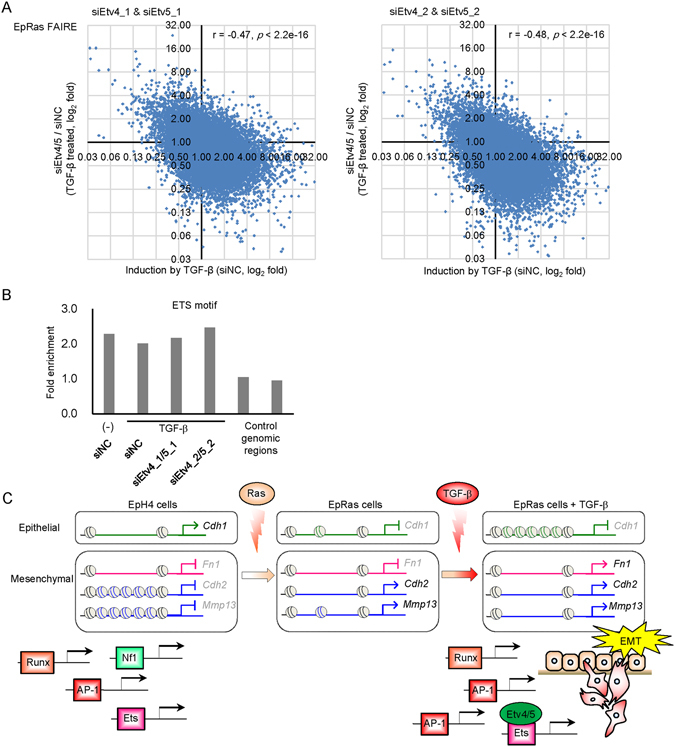Figure 7.

Effect of Etv4/5 siRNAs on the global chromatin accessibility. (A) Scatter plots showing the effect of TGF-β (X-axis) and Etv4/5 siRNAs (Y-axis) on the genome-wide chromatin accessibility determined by FAIRE-seq. Note that there was a significant correlation between the effect of two different siRNA sets (r = 0.51, p < 2.2e-16, Supplementary Fig. S7). (B) Enrichment of ETS binding motif in the FAIRE-positive regions of EpRas cells treated by TGF-β and siRNAs as indicated. (C) A schematic model for regulation of EMT-related gene expression through the differential expression of transcription factors and alteration of chromatin accessibility. In the process of EMT, chromatins are gradually closed by Ras and TGF-β at the Cdh1/E-cadherin gene locus. In contrast, upregulated genes are regulated by a variety of mechanisms. The Fn1/fibronectin gene locus is open irrespective of Ras and TGF-β treatment, while Cdh2/N-cadherin gene locus becomes accessible upon Ras transformation, and the Mmp13 gene locus becomes accessible upon Ras transformation and TGF-β stimulation. Differentially expressed transcription factors, Etv4 and Etv5, are responsible for a subset of EMT-related changes in gene expression partially through the alteration of chromatin accessibility.
